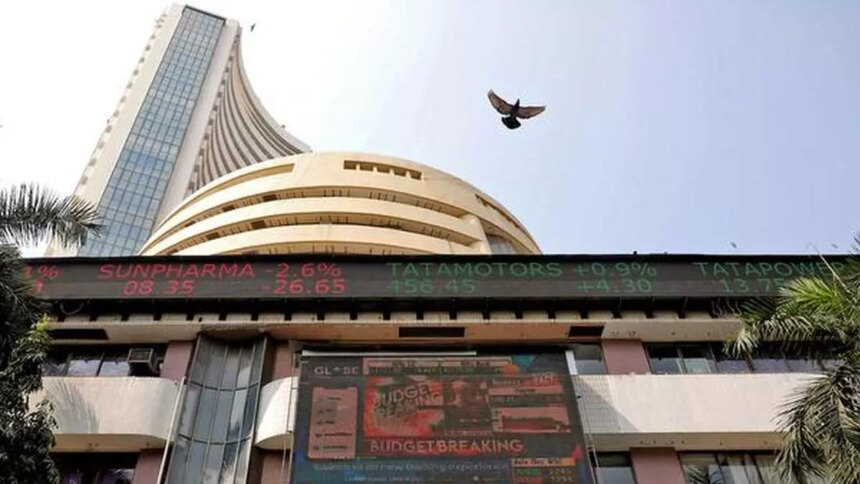Indian equity markets saw a reversal of early gains and turned lower in afternoon trading on Monday, with consumer stocks facing selling pressure despite strength in healthcare and metal counters. The BSE Sensex dropped 225.44 points or 0.29% to 78,358.37, while the NSE Nifty slipped marginally by 19.30 points or 0.08% to 23,719.95 around 12:51 PM.
The broader market, however, showed resilience, with the Nifty Midcap Select index climbing 1.16% and the Nifty Next 50 advancing 0.83%. Market breadth remained positive, with 2,619 stocks advancing compared to 1,171 declines on the BSE, while 177 stocks remained unchanged.
Apollo Hospitals emerged as the top gainer on the NSE, rising 2.84%, followed by Hindalco which added 2.52%. ITC Hotels, BPCL, and Trent were also among the top gainers, advancing 2.39%, 2.07%, and 1.83% respectively.
On the other hand, consumer stocks witnessed significant selling pressure, with Asian Paints leading the losers by dropping 3.19%. Other decliners included Titan (-2.77%), Nestlé India (-2.41%), ITC (-1.38%), and Bajaj Finserv (-1.34%).
The banking and financial services sectors showed mixed performance, with the Nifty Bank index up 0.50% to 50,410.25, while the Nifty Financial Services index gained a modest 0.29% to 23,688.15.
Market activity remained robust, with 244 stocks hitting their upper circuit limits and 182 stocks touching their lower circuits. Fifty-two stocks reached their 52-week highs, while 48 stocks hit their 52-week lows, indicating balanced market sentiment.
Earlier in the day, markets had opened higher, buoyed by positive momentum from foreign institutional investors turning net buyers after 23 consecutive sessions of selling. The initial optimism was supported by improving US-China trade relations and expectations surrounding the upcoming Reserve Bank of India policy decision.
As trading progressed, market participants continued to monitor the RBI’s monetary policy meeting outcome. Some analysts anticipated potential rate adjustments following the Union Budget’s focus on boosting consumption. The volatile trading pattern suggested investors were reassessing positions ahead of these key events while maintaining a cautiously optimistic outlook.










